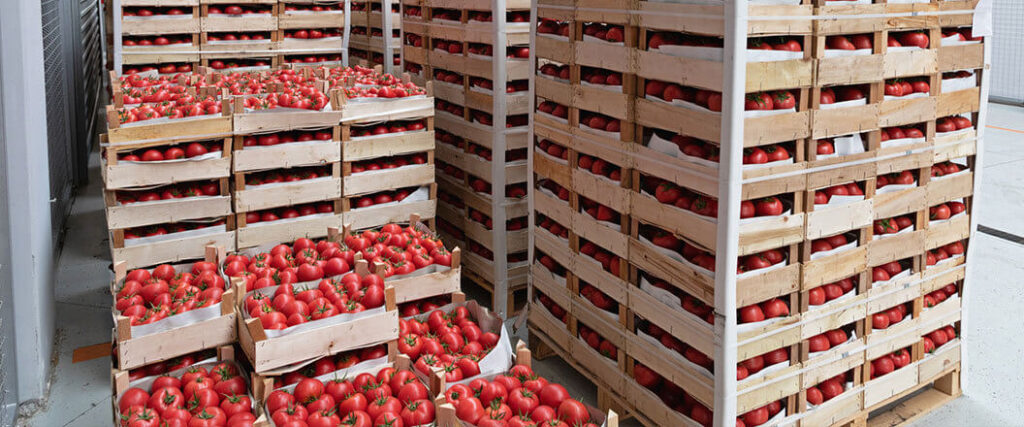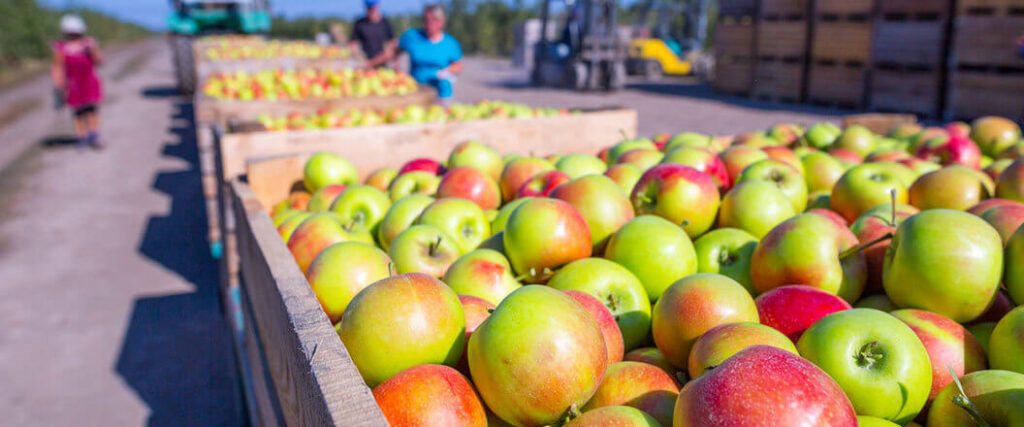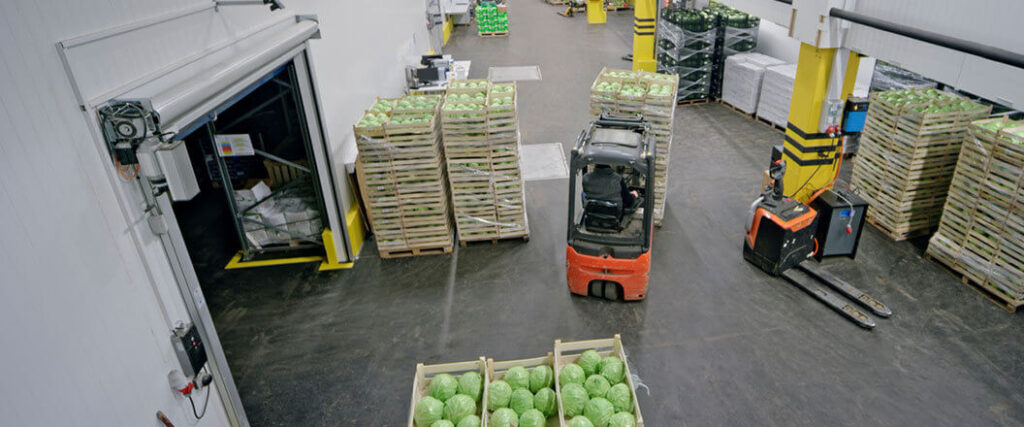Rejected produce loads are a common and unavoidable risk for drivers working in agriculture. Even when produce is protected within refrigerated trucks, there are a number of factors that cause receivers to turn away a load of produce, and not all of them have to do with product quality.
The U.S. Department of Agriculture (USDA) oversees the Perishable Agricultural Commodities Act (PACA) which gives receivers the right to reject produce that does not meet quality standards. Although most receivers are not advised to fully reject produce loads, when it does happen, drivers should be aware of their options.
As experts in the business, we’ll let you know what your options are as a driver, shipper, and receiver when it comes to produce shipments.
What Should Drivers Do About Rejected Produce Loads?
As far as the trucking industry is concerned, harvest season begins in Florida and Texas and works its way north through the spring and summer. The season and the money that can be made from it are on a strict schedule.
Despite how much care drivers and carrier companies take, there will inevitably be loads that get rejected. Unfortunately, drivers often have to deal with the immediate fallout of a rejected load. They are the ones on the clock and need to find solutions as quickly as possible. Any time drivers spend stalled out is counting against their pay.
Whenever a driver is hauling a produce load, they should be prepared to act upon a rejection with the following steps:
- Contacting their insurance provider
- Get a USDA inspection of the goods to confirm the rejection cause
- Inform dispatch or carrier contact
Once these steps are taken care of, the driver will need to explore the options for the load itself. We’ll discuss these in more detail a bit later on, but let’s finish with the legal aspects of a shipment rejection.

What is a Disposition?
Once rejected freight has been reported, a driver follows the direction provided by the receiver or the shipper. A disposition is the official term used when a driver is asked about what can be done with a shipment.
Once a carrier asks a driver for a disposition, the response should be immediate. The real solution is likely going to take some negotiating. Either way, none of it gets started until the initial response is sent.
What happens if a driver doesn’t respond to a disposition request quickly?
- A carrier may send a follow-up message to store the shipment somewhere
- Insurance companies may reject any claims due to delayed driver actions
- Drivers can face disciplinary actions for failing to respond within a set time
Any of these actions end up reflecting badly on drivers. Putting a rejected load in a warehouse takes both time and money. Depending on the circumstances, those storage fees could come out of the driver’s expenses.
If it’s the driver’s own insurance denying the claim, that’s even more money lost. A driver could end up in the red on a failed delivery and have no way of recovering financially from that particular load.

Why Are Produce Loads Rejected?
Rejected produce loads create significant delays for both drivers and consumers. Thanks to improving technology, rejections can be reduced, but they never go away completely.
Produce loads get rejected for a few different reasons:
- Delivery outside of a pre-set time
- Damage during transit due to load shifting
- Mistakes on a Bill of Lading or other shipping documents
- Produce that’s damaged due to wrong temperature settings
- Trailers containing more products than ordered
- Receivers unhappy with the carrier service
There are times when a receiver will reject a load even if nothing is wrong with it. Sometimes, it’s because of product overage where the client doesn’t want to pay for or take on extra product that wasn’t originally ordered. This still counts as a legitimate rejection.
However, there are cases of receivers turning away produce and claiming that it’s damaged even when it isn’t. These are known as wrongful rejections. These actions are technically illegal, but proving it can be difficult.
What To Do When Produce is Wrongfully Rejected
If a driver believes that their produce load is being wrongfully rejected, they need to act on it quickly.
Fair trade in the agricultural industry is protected by the Perishable Agricultural Commodities Act (PACA) first passed in 1930. Among other things, PACA protects produce deliveries from unfair rejection claims by buyers trying to get out of a contract or who want to claim insurance money from damaged cargo.
Receivers trying to get around PACA regulations will resort to some underhanded tactics that drivers can watch out for:
- Delaying shipment receipt: They may keep a driver waiting at a loading dock or construct some other type of delay. This increases the chances that a reefer unit can malfunction or that non-refrigerated products will start to spoil.
- Requests for contract amendment: A buyer will state that there is an issue with the load and ask the driver to allow the buyer to change the contract or transfer it to another buyer or wholesaler.
Under PACA regulations, a buyer has eight hours after a shipment arrives to formally reject the delivery. Keeping a driver waiting for eight hours is very unreasonable. However, if the driver just so happens to arrive near the tail-end of the agreed delivery window, even a short delay could give a receiver a way to legally reject the produce.
What should a driver do if they feel a load has been wrongfully rejected? Document. Document. Document.
To prove wrongful rejection, drivers should do the following:
- Inform the buyer that they are on notice for a possible wrongful rejection
- Get a reason in writing from the buyer stating why they are rejecting the load
- Thoroughly document all steps that were taken to protect the shipment
- Mention the possibility of wrongful rejection to both the carrier and insurance company
- Photograph the freight as proof of quality
- Have the produce inspected by the USDA to confirm it’s good
The final step mentioned here is normally up to the receiver. In cases where there is a true reason to reject a produce load, a failed USDA inspection protects the receiver.
In the case of a rejection, a USDA inspection protects the driver and carrier. Even so, all the documents in the world can’t force a receiver to take the goods off the truck. More than likely, the driver is still going to need to come up with a solution for the rejected produce.
On the bright side, any expenses or profit losses that resulted from an illegal rejection can become the responsibility of the original buyer.

How to Prevent Rejected Produce Loads
Outside of wrongful rejection, there are plenty of legitimate reasons that fresh produce gets turned away. Fresh produce has a very limited shelf life. To make a profit during any harvest season, drivers and carriers need to be a step ahead of common issues.
Take extra time with the following items:
- Product Documentation: Make sure that the order matches the Bill of Lading (BoL). Items such as the purchase order, weight, and total quantities need to match exactly with what’s being delivered.
- Pallet Configuration: When some big box stores order produce, they want it palletized very specifically. If the setup doesn’t follow the buyer’s instructions, they do have the right to reject it.
- Route Planning: Fresh food has a limited shelf life. Buyers need to get it with enough time for it to sit on shelves for buyers to get it. This means getting the route and the timing of the delivery just right. Late shipments are more likely to get turned away.
- Equipment Checks: Many farmers are now using refrigerated transport services to preserve goods a little longer. Reefer loads rejected due to incorrect temperature settings or poorly maintained equipment give carriers and drivers a bad name.
Agriculture still makes up a large part of the American economy. According to the USDA’s data on land use, about 52% of U.S. land is dedicated to agriculture. For better or worse, produce shipping is a major player in the logistics industry.
Drivers and shippers are better off embracing it, along with a set of best practices so that when harvest season comes along, they are able to meet it head-on.

Driver Options For Rejected Produce
Despite every precaution, rejections will still happen. Roads are unpredictable, so rough weather, spotty traffic, and plain bad luck can ruin a delivery schedule.
Drivers are on the front lines of the rejected freight battle, so it’s good for them to go into any produce or reefer load delivery with a plan in mind.
Common solutions to rejected produce loads include:
- Reworking warehouses
- Alternative processing facilities
- Donation facilities
- Recycling and disposal
We’ll take a look at each of the options and where and when they can be used for rejected shipments of produce or other perishable food items.
Reworking Warehouse
If the cause for the rejection is a load shift issue or other pallet concern, a rework warehouse may help you out. A rework warehouse is a freight facility where loads can be repalletized, transloaded, or otherwise adjusted so they can be safely delivered. These are also referred to as lumper services.
So long as there isn’t any actual product damage, making a pallet safe for unloading at least gets the load off the truck and fulfills the order.
On the downside, it does take up valuable time and reworking isn’t a free service. A driver would also need to check with their dispatcher and carrier company to determine if there is one in the area. They should do some quick math to determine whether the extra time and money make it worthwhile.
Drivers pay an average of $350 per service and need to make sure to keep an account of the fee, so the shipper can reimburse the cost.
If the reworking costs more than the shipment is worth, or there isn’t a facility nearby, there are other options to explore.

Alternative Processing Facilities
Grocery stores like their fresh produce to look nice, so fruits and vegetables that are slightly bruised or even oddly shaped are less likely to sell.
If a load is rejected because of surface damage, but the product itself is still good, there are alternative facilities that could still accept it, usually processing centers that are going to turn it into something else.
Alternative facilities include places such as:
- Canned goods facilities
- Potato chip makers
- Jam and jelly processing centers
- Sauce makers
- Pet food makers
Any food processing facility that could use your produce load as an ingredient is a viable option. These centers will still pay for the product, so drivers and shippers still make a profit.
These arrangements need additional time to finalize, so the following details are taken care of:
- Formally changing the receiver on the product invoice
- Negotiating costs between the shipper, carrier, and receiving facility
- Product storage while negotiations are finalized.
Depending on how long it takes to organize a shipment to a different facility, drivers might be able to drop off the load in storage. This way they take on other hauls, so they are still keeping the wheels turning and making money.
Shippers can also use the services of a transload facility specializing in agricultural products. This helps drivers avoid possibly long drives out to remote farms and ranches.
Donation Facilities
Donation is the second option drivers have for produce that is still good to eat but not visually appealing enough to get accepted. Aside from contributing to a good cause, a driver is able to receive tax credits for donations to recognized charity organizations.
Donations can be made to:
- Local food pantries
- Homeless shelters
- Animal refuge centers
- Prison facilities
- Orphanages
When these facilities are in the immediate area and have the means of unloading the freight, it’s often the fastest way for drivers to resolve load rejection.
Recycling and Disposal
Food recycling simply means finding a use for food other than in a landfill. Depending on how it’s being recycled, even spoiled foods can be saved and put to good use.
Unfortunately, these usually don’t qualify for tax credits the way donations do. On the bright side, carriers and shippers may still be able to compensate drivers for fuel and miles traveled.
Options for food recycling include:
- Farms and ranches that maintain compost piles
- As animal feed in livestock farms or zoos
- Biogas facilities that convert waste into fuel
Some of these places, like biofuel centers, might still pay you something for the load since they are looking to attract frequent sources of waste for their facilities. It’s in their best interest to get drivers to dump loads there versus a landfill.
Fighting against food waste is actually one of the Environmental Protection Agency’s (EPA) top concerns. Statistics released by the Food and Drug Administration (FDA) and the EPA reveal some sad facts about food waste in general.
United States Food Waste Statistics
| Amount of food supplies that go to waste annually | 30 - 40% |
| Average value of food waste in a single year | $161 Billion |
| Number of people in food insecure households | 42.2 million |
| Percentage of food in at municipal solid waste centers | 24% |
| Food waste managed through composting | 4% |
It’s a bad day when a driver has no choice but to find a disposal facility or landfill. More often than not, these facilities charge drivers and carriers for disposal, usually by the pound or ton. Even so, sometimes it’s the only option given to drivers due to legal or logistical concerns.
Drivers make money when the wheels are turning and a load is getting delivered. For them, the produce season represents a limited window of opportunity where they can find continuous and well-paying loads. When talking about the cost in terms of real-time, many drivers simply can’t afford the extra hours it takes to negotiate alternate drop-offs.
Carrot On With Transload Services USA
In an effort to reduce food waste and help drivers stuck with rejected produce loads, Transload Services USA offers freight re-working services at multiple facilities.
We want to help drivers complete their deliveries and get back on the road providing essential services for millions of Americans.
Our services include:
Call us today at (352) 282-4588 to speak with a freight specialist. Need help right now? Get a quote online now and be on your way.

